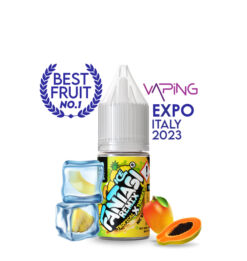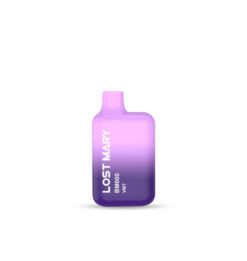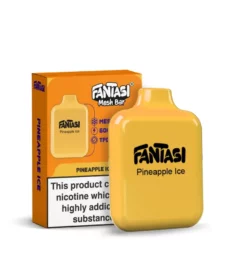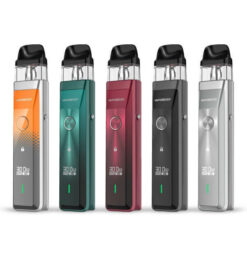Analysing What is in Vape Juice
What is in vape juice is a question many vapers find themselves asking from time to time. After all, we’re inhaling our e-liquid on a daily basis so there’s nothing wrong with doing your due diligence – in fact we’d encourage it!
If you’re wondering what’s in your e-liquid then you came to the right place. Considering we manufacture all of our own vape juices, few are in a better position to tell you what goes in it than us!
In this post we’ll explain what’s used to make vape juice, what impact these ingredients have on your body and whether there are any safety concerns you ought to know about.

What Ingredients Are Used in E-Liquid?
If you look on the side of your e-liquid bottle, chances are you’ll see the words “propylene glycol (PG)” and “vegetable glycerin (VG)”. These are the two main ingredients found in the vast majority of vape juices (including ours).
Most e-liquids come in ratios of either 50/50 (PG/VG) or 70/30 (VG/PG). Others may vary slightly but these are the two most common.
The exact ratio of these will depend on the type of juice you’ve chosen, but most vape juices contain these two ingredients, as well as flavourings.
Some e-liquids also contain nicotine, although those who order shortfill bottles will receive 0mg and will need to add it themselves (unless they prefer nicotine-free e-liquid).

Are These Ingredients Safe?
If you’ve found this article because you’re concerned about the safety of e-liquid ingredients, you’ll be glad to know they aren’t something you need to worry about.
Let’s start by taking a look at PG. This is an odourless, colourless liquid that has a slightly sweet taste. Used in a variety of everyday products, you’ll find propylene glycol in many food items, cosmetics and medicines. It’s also used in e-liquid because of its emulsifying effects as it helps to keep the ingredients mixed together.
The other most abundant ingredient is VG, which is a clear, viscous liquid that’s typically made from palm, soybean or coconut oils. This product is used as a thickening agent and is responsible for those thick plumes of dense vapour you get when you vape.
When producing e-liquids, manufacturers use different PG:VG ratios to achieve various levels of thickness. This is done because some devices work best with the thinner consistency of PG, while others are better-suited to the more viscous VG.
So now we’ve covered PG and VG, that just leaves the flavourings.
Unfortunately it’s impossible to cover all of them in this blog post as there are literally hundreds of flavours of e-liquids which each contain a variety of different flavourings. However, all of these flavourings are food-grade ingredients, and every one of them is approved for use by the Medicines and Healthcare products Regulatory Agency (MHPRA) so rest assured these are also safe for you to use.
For some, a curiosity over what is in vape juice stems from a distrust that’s usually been fostered by negative reports they’ve read in the media. But in truth, all the ingredients used in e-liquid are approved for use by the MHPRA and are actually found in many other everyday products.

Can E-Liquid Ingredients Cause Side-Effects?
Now that we’ve established the safety of e-liquid ingredients, it’s important to note that vaping can still cause some side-effects. With that said, these are only mild and they only affect a small number of vapers so most won’t experience any at all.
Still, for a small number of people there may be a few minor side-effects, so it’d be remiss of us not to mention these here. These are the most common side-effects from vaping:
- Coughing
- Dry mouth and throat
- Shortness of breath
- Mouth and throat irritation
- Headaches
Most of these side-effects are caused by using your device too frequently so if you experience any then just lower your use and they should subside.
And remember, humans can experience side-effects from all types of everyday products, from certain types of foods, cosmetics and some of the most commonly-used medications. When we compare these mild side-effects to those caused by smoking, there’s really no contest!

What About the Nicotine?
Now we’ve covered the bulk of e-liquid ingredients, it’s important to mention nicotine too. Although some people prefer to use no-nicotine e-liquid, if you’re going to be vaping e-liquid which does contain nicotine then it’s always a good idea to understand the risks.
Unless you suffer from heart disease, nicotine is pretty harmless in terms of the effect it has on the body. With that said, it’s a highly addictive substance which is why we would never recommend vaping nicotine-containing e-liquid unless you’re using your vape to quit smoking.
As well as being extremely addictive, nicotine can cause a few side effects in users. These include the following:
- Decreased appetite
- Heightened mood
- Increased heart rate/blood pressure
- Nausea
- Diarrhoea
- Improved memory
- Heightened alertness
Although most of these side effects are negative, it’s worth remembering that they’re usually minor and they’re also much less likely to affect long-term users.

How Does Vape Juice Compare to Tobacco?
Now we’ve established the safety of vape juice ingredients, let’s take a quick look at how vaping compares to smoking. After all, the reason the vast majority of us vape is because we used e-cigarettes to quit combustible tobacco products.
As we know, smoking is still the biggest cause of preventable deaths in the UK with almost 80,000 people a year losing their lives to smoking-related illness in England alone.
The cause of these deaths is the 5,000 or so chemicals found in tobacco smoke – the main offenders being the tar and carbon monoxide which are responsible for the vast majority of illness.
In contrast, neither tar or carbon monoxide is present when we vape, and vaping has been proven to be much safer than smoking – at least 95% safer, according to the massive study carried out by Public Health England (PHE).
If you were concerned about the safety of vaping, hopefully your mind has now been put at ease. If you’d like to learn more about how vaping affects our body, check out our Vaping & Health guide which should have all the info you need.
Alternatively, for further information on the two main ingredients in e-liquid take a look at our VG or PG blog which takes an in-depth look at both of them.





